A Look Back at Ghost of Tsushima As Yōtei Looms
Looking back as the future draws near
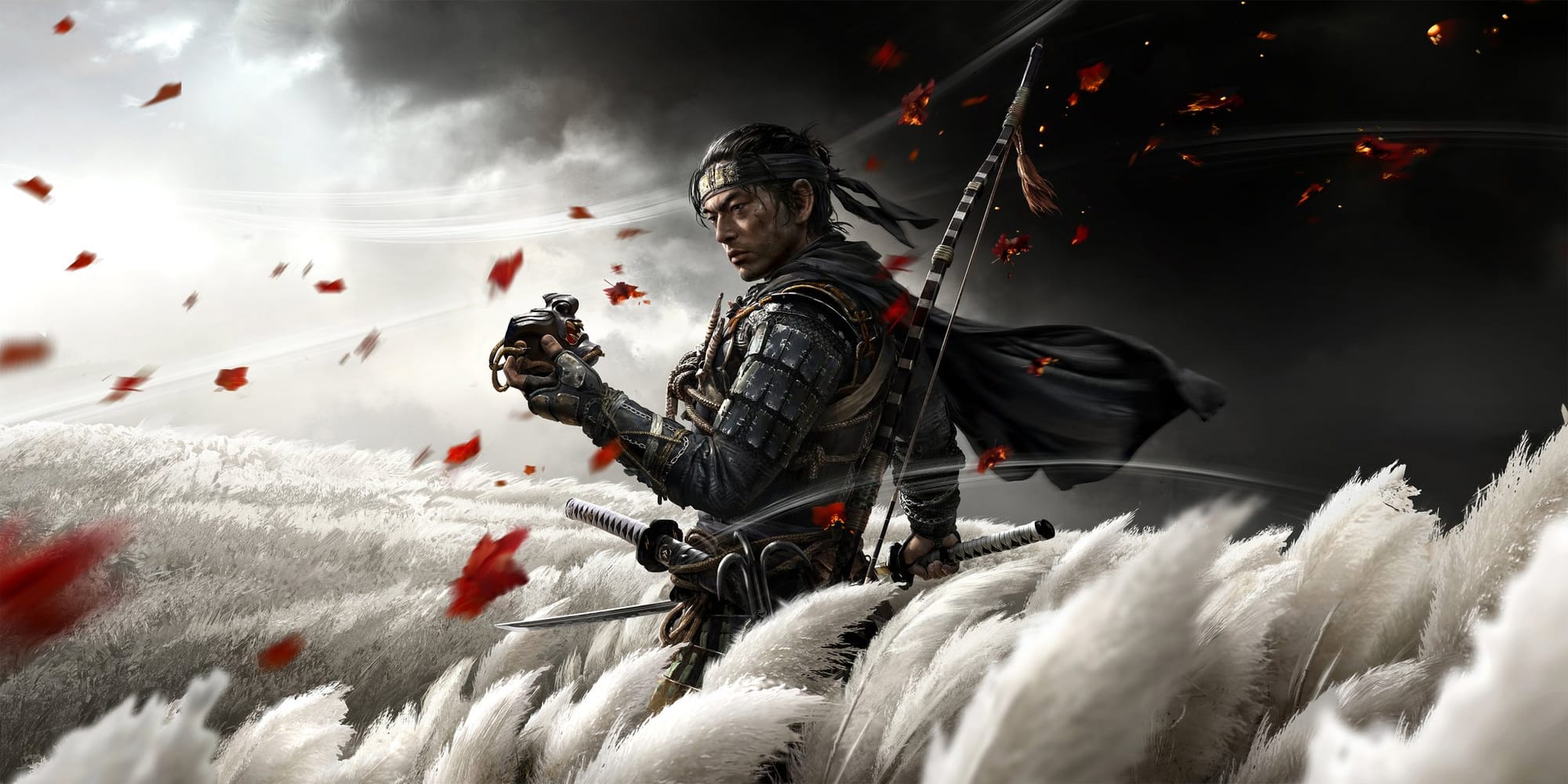
There are still many PlayStation exclusives I've yet to play, having missed out on most of the PS4 era. They’ve been extremely hard to fit into my schedule, since many are 30+ hours long. I was especially keen to play Ghost of Tsushima; it seemed right in the wheelhouse of a huge history buff like myself. I’m of the mind that historical fiction is a vastly underutilized setting in AAA games. Those studios and publishers have the kind of staff and resources required for an accurate portrayal of historical settings, along with the opportunity to tell emotionally meaningful stories.
A game like Red Dead Redemption 2 is a fantastic example of historical fiction, and Pentiment is excellent too (though not AAA). I know Kingdom Come: Deliverance is also well-regarded, though I’ve yet to experience either of the games in that series.
After finally playing it, I would like to happily add Ghost of Tsushima to the ranks of great historical fiction in gaming. I'm ashamed of having slept on it for so long. It is utterly brilliant, completely nails its setting, but like everything, it is not without its flaws.
Sucker Punch is a fantastic developer, and I’ve always been a fan of their work. I don’t feel they get talked about enough among the studios that consistently put out quality products, so I want to give them their due credit. When I was young, I knew them for the Sly Cooper series, which many would agree is excellent, and their Infamous series on PS3 is similarly beloved. While both franchises are dormant and only accessible through PS Plus Premium streaming nowadays, they help build out what is a fantastic catalog for Sucker Punch. They know how to make action games feel punchy, awesome, visceral - but most importantly, they feel grounded within their own setting.
In Sly Cooper, when you get into combat, Sly often struggles when he’s outnumbered. He’s a thief, that makes sense. Cole MacGrath, the protagonist of Infamous, does not quickly get powers beyond electricity, and even when he does, the reason for it makes sense. It also isn’t overdone, with only one or two abilities that are locked behind a karmic decision.
Sucker Punch knows not to overextend its reach, which is something I’d like to point out since it very much applies to Ghost of Tsushima. While not based on real events, Ghost of Tsushima is historically grounded. The extent of things, to avoid a long essay about the Mongol invasions of Japan, is that the Mongols invaded during the same time period in which the game is set. That’s really what it comes down to, yet Sucker Punch was able to craft a story that was remarkably believable to play all the way through.
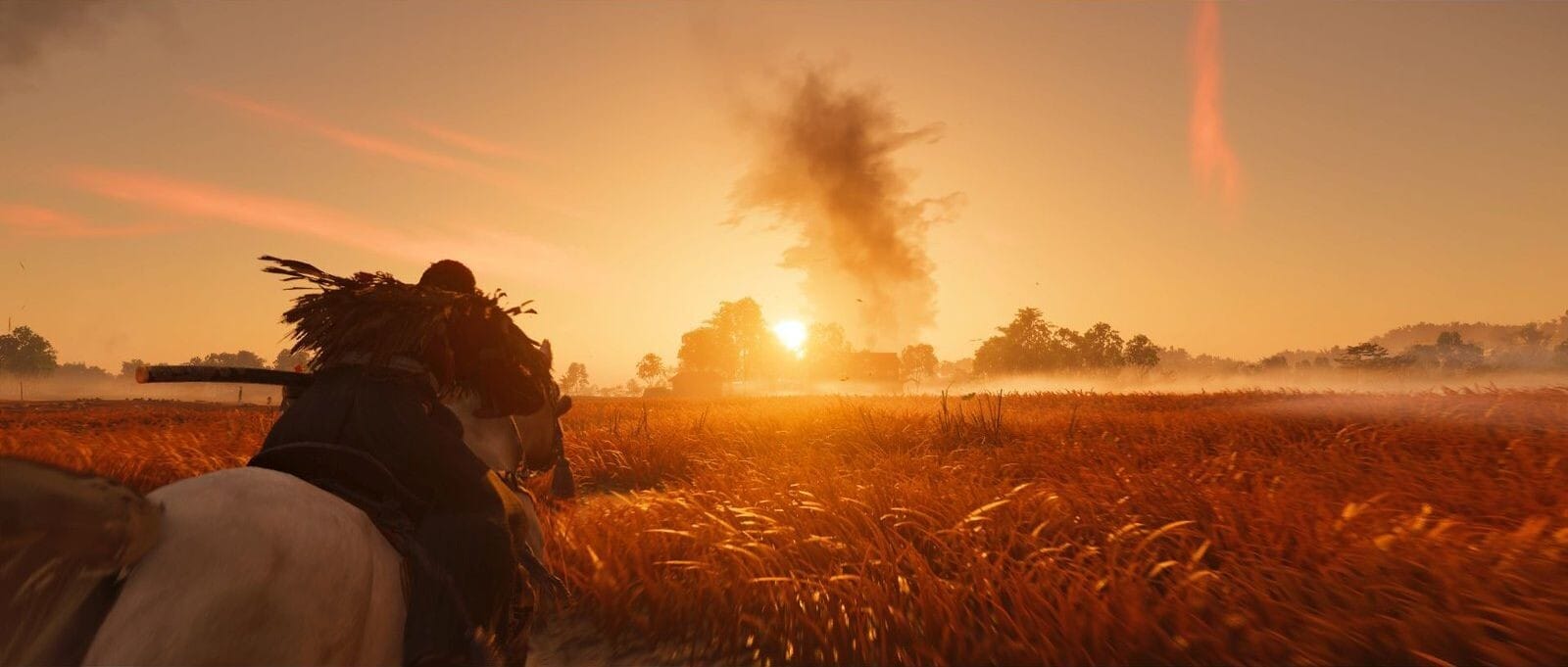
Ghost of Tsushima is a game I loved playing, but it is also a game I have a lot of nitpicks with, which sadly give me pause when it comes to overtly praising it. This is a game that, while great, has a lot of flaws, and I’d be remiss if I didn’t make note of those flaws. I'm prefacing with this so it's clear that any criticisms I have with it are being balanced with praise. Those critiques come from a place of love and a hope that they’re built upon for Sucker Punch’s upcoming Ghost of Yōtei.
A Story About Shifting Morals
The game begins with a very sobering introduction of the samurai of Tsushima fighting Mongol invaders on the beachfront. It is immediately brutal, a fantastic introduction to the setting and story you’re in for. Yes, the game takes a bit to spin its wheels here. There’s a decent amount of time that passes before you’re actually able to explore the open world as Jin Sakai, nephew to the jitō of the island of Tsushima. The most memorable part of this introduction is when Jin can finally choose a horse and ride off through these beautiful white flower fields. The music swells in such an incredibly moving way right before the title drop. It’s a moment you look back on once you finish the game and note it as an indication that you were in for something special.
Rather recently, I noticed people critiquing the game's writing, and I was eager to see what their gripes were. The exact issue wasn't clear to me at first until I was around halfway through the game's story. Though I wish to remain spoiler-free and will tiptoe around the main story of the game as much as humanly possible, I must admit that the complaints are valid. Ghost of Tsushima’s writing is great at best, though average at worst. The narrative itself is a bit shaky, and I couldn’t quite pinpoint why that is. I really struggled to determine why the story feels likeable but uneven in the end, but I couldn’t quite come to a firm conclusion on that. Let me do my best to present what I believe hurts Ghost of Tsushima’s writing the most.
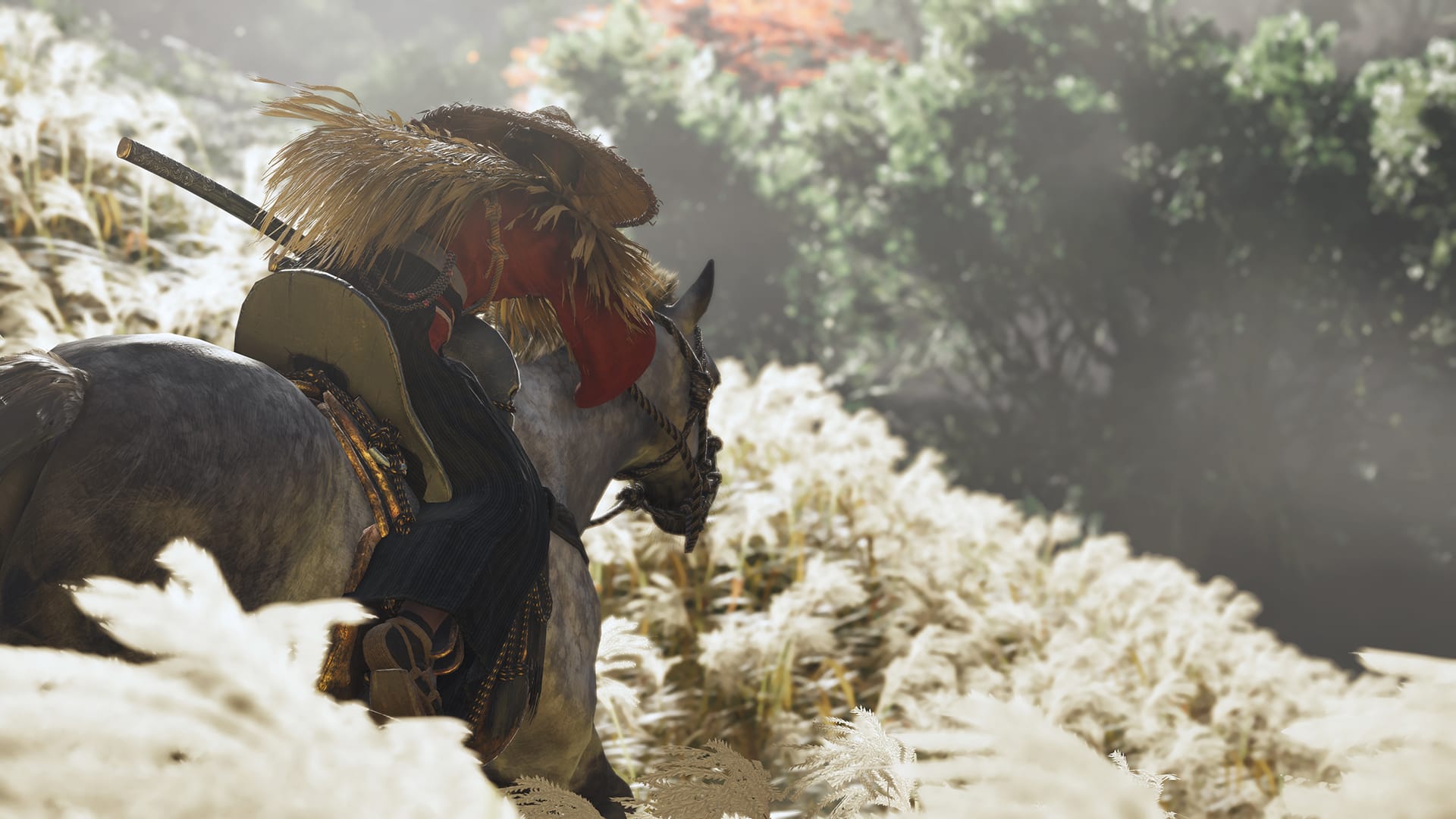
The game's quest structure stuck out to me above all, as I found it was often extremely repetitive. Between main story quests and side quests, you’ll find that Jin will sneak around a bit or ride his horse to a certain location. Then Jin might investigate the area, or he’ll encounter some Mongols that he needs to fight off. You then either talk to the quest giver at that location or run back to where they were to turn it in. Sometimes the order of those things gets shuffled around a bit. You'll rinse and repeat this a plethora of times throughout the main story as well as the numerous side quests in the game.
See, the writing itself is not the issue. The way these missions are structured, however, makes it seem that way. The moment-to-moment dialogue is excellent. The sentiment of the main story is very moving, and I find it to be a great idea for a character arc. Even the questlines for Jin’s companions are surprisingly heartbreaking. Lady Masako, in particular, goes through hell in her story, and Norio’s questline has a really brutal gut punch at the end. Regular minor side quests are often dark and hauntingly realistic for the game's setting. I recall one where a man ran off from his farmhouse when Mongols attacked, leaving his wife and child behind. You can likely guess what happened, but the point of the quest is to drive home what a menace the Mongols actually are, the brutal reality of what war brings to common people. In that sense, Ghost of Tsushima could be seen as very anti-war. When you take the time to let these gritty side quests sink in, you really absorb the horrors of war. The anti-war message alone is what makes Sucker Punch's work here really worth playing, whether that message was intentional or not, for it is something that affects our world even today.
However, when you place this great writing in the same tired mission structures over and over again, it starts to lose its luster really quickly. It doesn’t resonate the way a player would want. As mentioned before, Lady Masako’s questline is great, but for the sake of the game’s structure, her story is split into 7 or so different side quests, each of them divided amongst the game’s three-area map, a map that is built to be the foundation of the game’s three-act structure. I’m okay with games using that structure, don’t get me wrong here. It’s used so often because it's efficient and reliable for crafting a game experience. Did we really need to have Masako’s questline splintered across all three of them? How many times are we going to just miss out on catching Tomoe, Sensei Ishikawa?
All of a sudden, the impact of those quests gets lost on the player since they can't continue her story without progressing the main story, leaving hours between those quests. To the game’s credit, it almost feels wrong to skip over the side quests for Jin’s companions, but they would have been so much more memorable and impactful if they weren’t so stretched out. I point all this out because I believe this is why the game's inherently good writing gets lost on people, and I feel the need to sort of push back on that to defend Sucker Punch and their work.
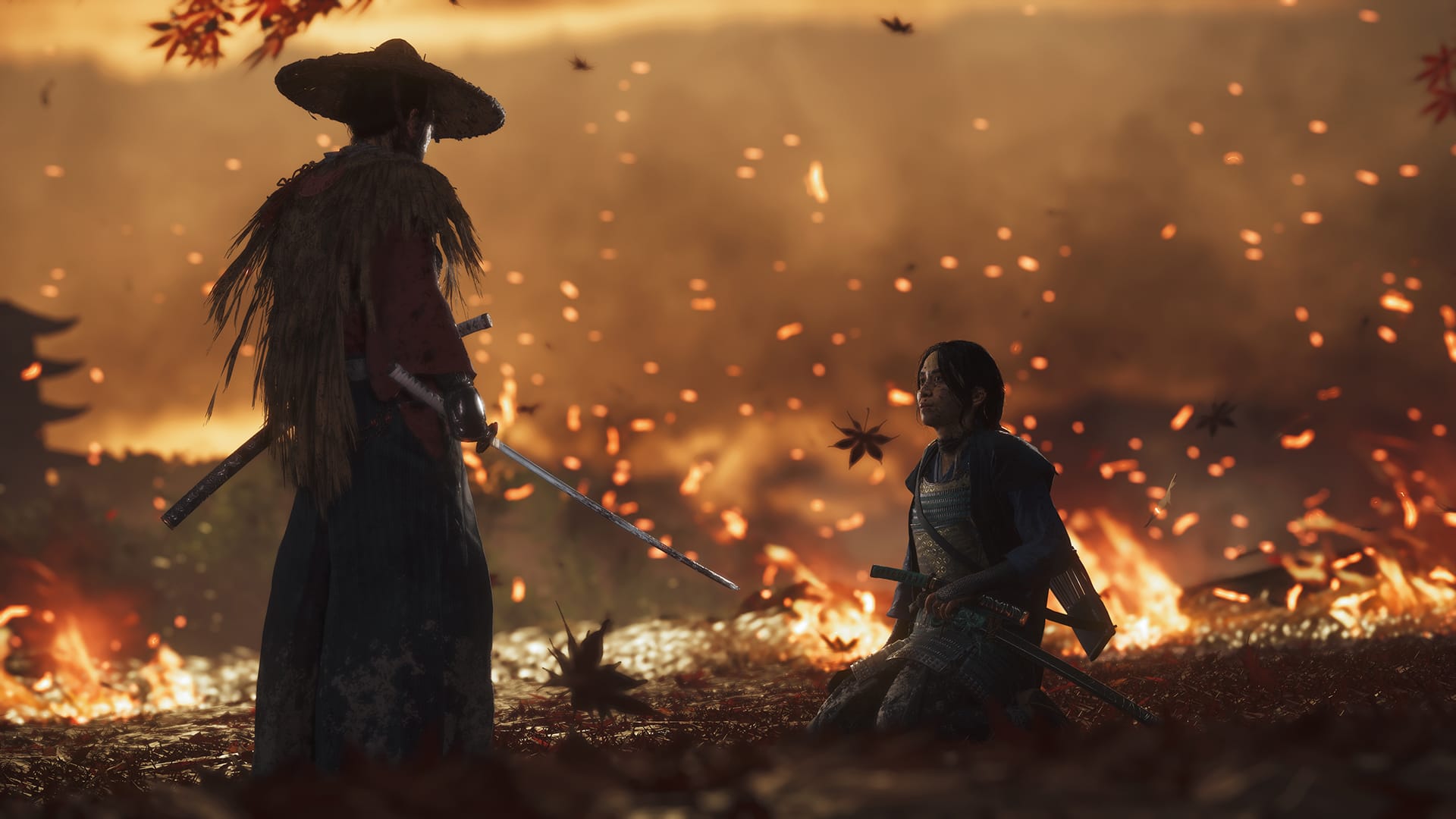
There’s also a lack of player impact on the game’s plot that rubbed me the wrong way. Not a ton, I must admit, but it is worth noting, for I’ve seen other people complain about it as well. For context, the key narrative character arc for Jin Sakai involves forgoing his samurai code of honor when he realizes the Mongol invaders pose a threat unlike any they’ve faced before. Over the course of the story, Jin becomes increasingly open to breaking his code of honor to achieve an advantage over the Mongol invaders. He begins to utilize stealth and other tactics, often seen as unsavory, for the sake of survival and victory. It’s frankly a genius idea for a character arc in this setting, and I think it’s actually written wonderfully.
The game does a great job at making you feel guilty about doing this, the same way Jin himself feels guilty about it. They pull this off really well by pushing you to use stealth via mission design or simple mechanics, such as Mongols attempting to kill hostages if they’re alerted to your presence. After using stealth for a while, you’ll see Jin have a quick flashback where he apologizes to his uncle under his breath, the thought dawning on him that he’s broken his code of honor. The more stealth you use, the more common storms are on the island of Tsushima, an ominous reminder of Jin’s downward spiral into being the “Ghost”. The intention is that you go from cutting down Mongols with general swordsmanship in The Witcher, to utilizing stealth even in extreme ways like Assassin’s Creed.
Games that inject their themes into the gameplay itself are rarer than you’d think. Those games are really fascinating to me as someone who looks at games artistically, for it really makes the game feel synergetic to itself. Celeste is a game that comes to mind, where its central themes about overcoming anxiety are reflected in the game’s difficult platforming. Ghost of Tsushima manages to do this with Jin Sakai’s arc, and it really works with how lovable Jin is as a protagonist. Some may complain that Jin is rigid or stoic, but he feels fitting for a samurai. We see more of his personality in the Iki Island expansion, such as his love for animals and how much he cares for his own horse.
The player is free to continue playing the game however they want, even with the narrative's focus on Jin's increasing use of stealth tactics as part of his character arc. That’s nice and all, but that presents a little bit of an issue, doesn’t it? What if the player just insists on being a samurai despite the narrative? It causes some ludonarrative dissonance, and I noticed this firsthand since I was really enjoying the way the sword combat felt when I was playing the early game. I had one mission in particular where I was accompanying Sensei Ishikawa to clear out a Mongol camp. I ran straight into the camp and began cutting down Mongols like an honorable samurai, but in the subsequent cutscene, Ishikawa criticized Jin’s use of underhanded tactics. I didn’t use any, Sensei! It causes some really odd moments if the player decides to play the game this way.
Knowing Sucker Punch’s previous history with the Infamous series, I was surprised they didn’t consider using a Karmic system of some sort, or perhaps even an “Honor” system like the Red Dead series. Even some minor changes in dialogue or a narrative change in a few missions would’ve gone a long way in making the player feel like they’re in the driver’s seat rather than the passenger seat for the story. I suppose the rationale here would be that it is indeed Sucker Punch’s vision to portray this character arc for Jin Sakai. This is the story they want to tell, and I respect that, though it doesn’t particularly work 100% the way you’d want it to. I hope this is something they kept in mind for the upcoming Ghost of Yōtei.
The World of Tsushima
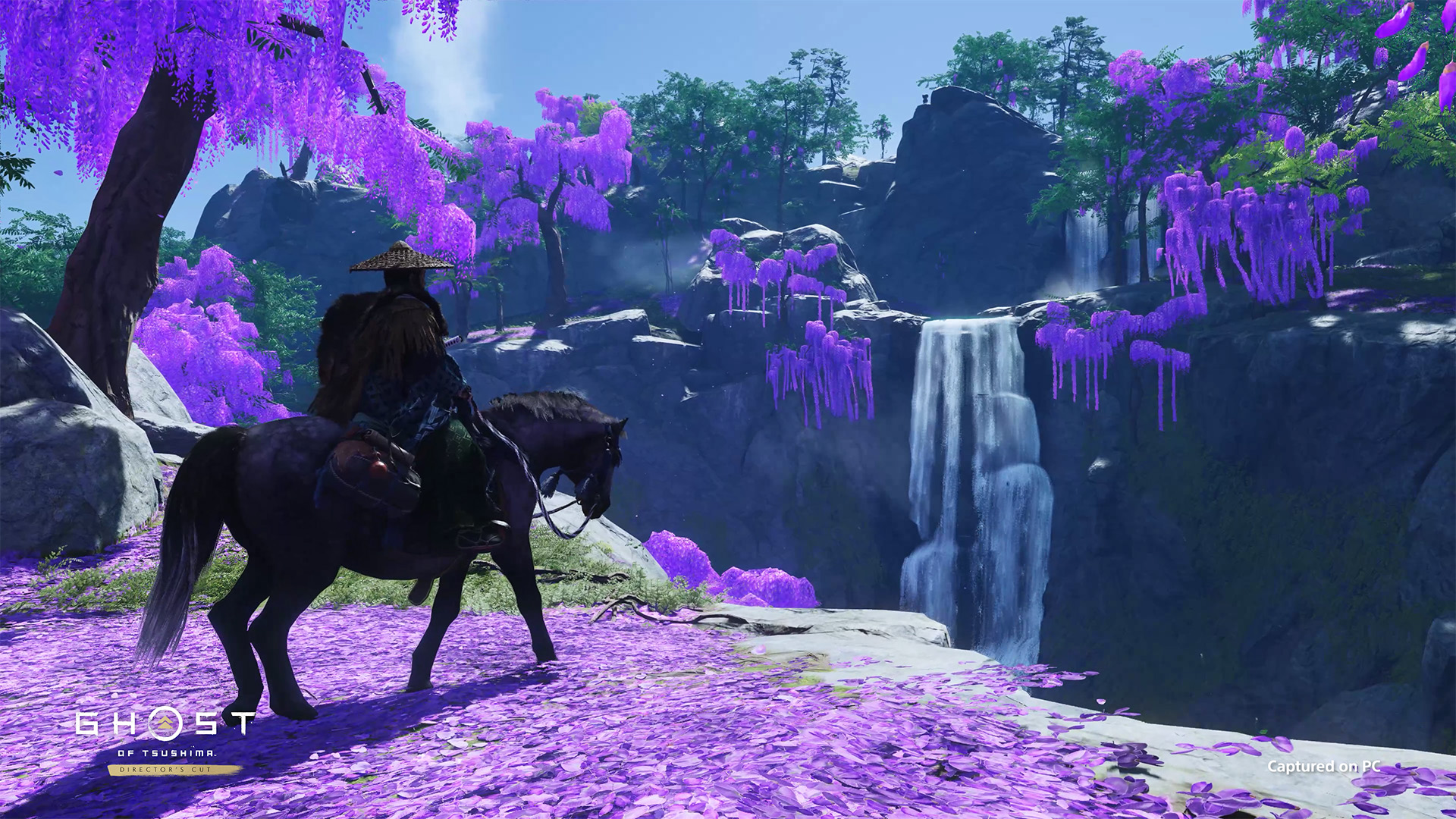
Ghost of Tsushima is set in an open world. I know some may roll their eyes at the standard open-world design, but this unique setting is something that really fascinated me. There was something particularly enthralling about riding around a Japanese location from this time period. The graphic fidelity is absolutely stunning, and out of any PlayStation exclusive I’ve played, this is one that 'wowed' me the most. The areas that shine the most are flower fields and the picturesque places with stunning views like waterfalls. It is a really beautiful game to look at a lot of the time, especially with the updates on PlayStation 5. Technically, it is a very sound game. I was impressed by how much the Director’s Cut takes advantage of the power of the PlayStation 5. Fast traveling is essentially instant, and so is booting up the game itself whenever you return to it.
I have to note here that, unlike most games in the genre, Ghost of Tsushima handles its open world as a hybrid of the standard approach and the Elden Ring or Breath of the Wild method. There won’t be a quest marker blatantly on your screen or HUD a majority of the time while playing this game. When you swipe up on your controller’s touchpad, the guiding winds will show you the direction of the current quest or marker you have selected on the map. Sucker Punch very clearly strove to make the HUD as non-intrusive as possible here, and they deserve a lot of credit for that.
There’s a plethora of side content in the open world where you’ll find yourself doing a minigame to receive a benefit of some kind. I always found the idea of side content in open worlds to be padding more often than not, though always with the potential to be better. All this type of content needs is to give the player a reason to go out of their way to do it. Ghost of Tsushima does that well, for some of it; the hot springs in particular will raise Jin’s health, making them worth seeking out if you find yourself getting cut down too quickly in combat. Bamboo Strike minigames will increase Jin’s Resolve, a mechanic I’ll get to a bit later. The others tend to be more iffy, though. The worst offenders are the Pillars of Honor, which merely give you a cosmetic skin for Jin’s blade. Composing haiku is a wonderful way to incorporate historical thematics of samurai into the game, though I also found myself disappointed that writing haiku only netted you differently colored headbands for Jin to wear.
There are two types of shrines as well, Fox shrines and Shinto shrines. Fox shrines, beyond following an adorable fox to a set location, will increase the number of Charms that Jin can equip. This dovetails well with the Shinto shrines that provide new Charms, which are accessories that Jin can equip for passive bonuses. I unfortunately found most Charms to be lacking based on my playstyle. Sucker Punch seems to be nudging you more towards stealth-based play styles with the variety of Charms available. The options of Charms for those who would rather do sword combat are not that interesting. I often found myself sticking to Charms that provided Resolve, health restoration, or increases to stagger, without much deviation from that.
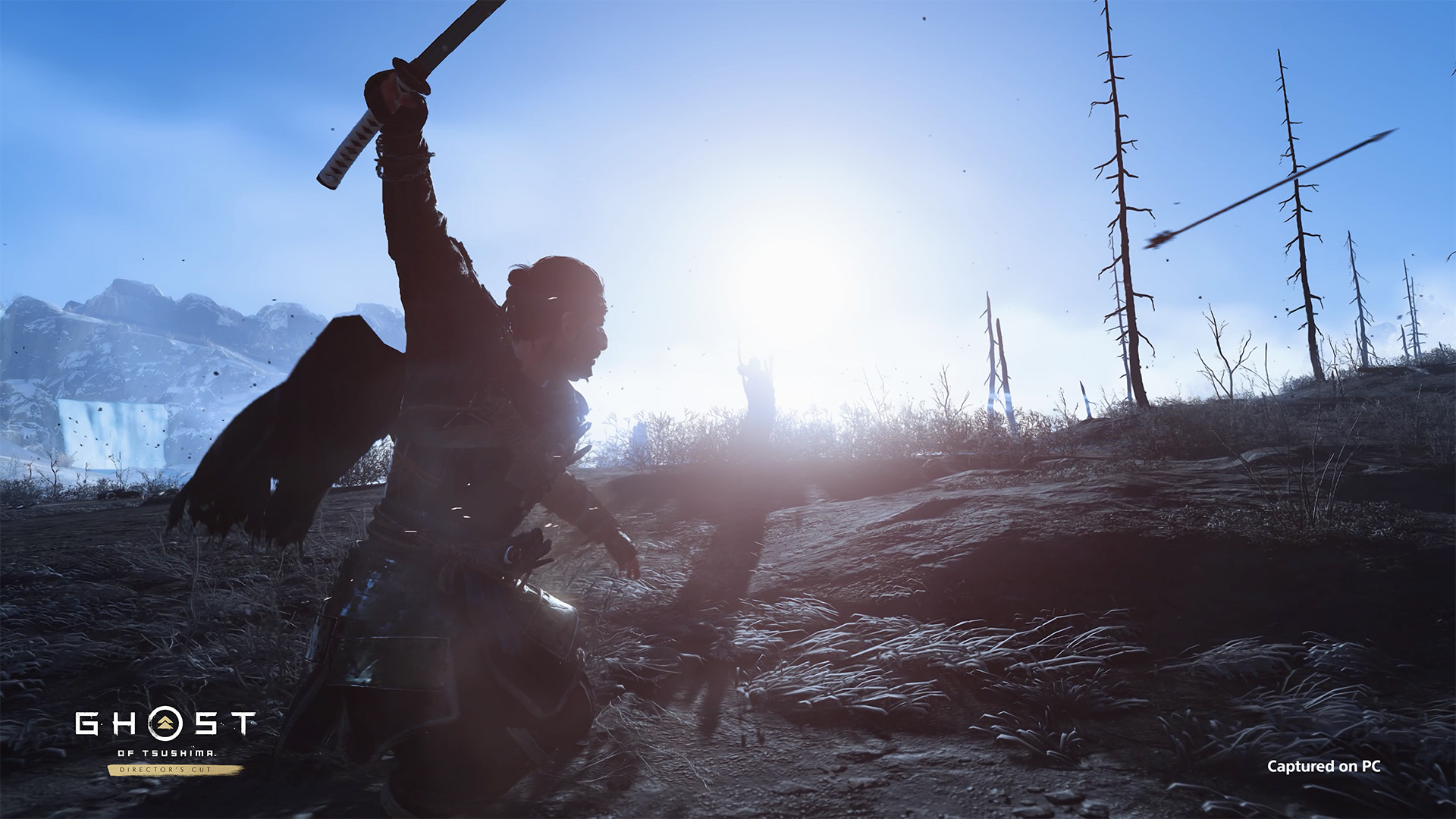
Combat itself felt really fun to me, though not the most complex. In combat, Jin can switch between different fighting stances after unlocking them by defeating Mongol leaders at their camps. Although you’ll likely unlock the three other stances beyond the default Stone Stance simply by playing the main story and doing side quests, it does feel worth the time to go out of your way to unlock them all, for it plays into how the combat develops. Beyond dodging enemy attacks and parrying where needed, these sword stances add a rock-paper-scissors type of approach to defeating enemies. Enemies are separated into different types based on their armaments, each one weak to a different sword stance. Archers are weak to every sword stance, though they can fire from range and stagger you if their hits land.
I do wish these stances were a bit more interesting to use, though switching on the fly is fun. It often feels like you’re playing into this weakness-swapping mechanic in combat rather than using a sword style you actually want to use. I was reminded of Devil May Cry as a series, as Dante’s styles are distinctly different in the later games, and switching between them to pull off combos adds a lot of variance to the gameplay. I can only hope Ghost of Yōtei builds on this system and makes it more complex, perhaps with even more stances.
Resolve is one of the key mechanics in combat, a meter that fills up as Jin performs actions against enemies. Parrying enemies or assassinating them, for instance, will increase your Resolve by a tick. You can gain more ticks of Resolve from those aforementioned Bamboo Strikes. You’ll need Resolve for Jin to heal himself, since this is the only way he can heal at all beyond visiting a Hot Spring. This makes parrying and being cautious in combat much more significant, which is what I really enjoy about the gameplay. Having the Resolve mechanic be rewarding but restrictive at the same time does a lot to keep the player engaged in its feedback loops. It’s what kept me playing for a prolonged amount of time. Later, you’ll use Resolve for special techniques unlocked via Mythic Tales, special side quests focused around local folktales and/or myths. I was particularly fond of the Dance of Wrath, which allows Jin to perform three unblockable strikes in a row.
Now, I’m sort of beating around the bush here about the stealth gameplay, but not for a bad reason. I’m of the mind that the stealth gameplay is indeed good, though not particularly intriguing. The AI for enemies isn’t the best, but I felt a similar way about the enemy AI in Middle-earth: Shadow of Mordor - the enemy AI being lackluster is actually to the game’s benefit, for it makes the stealth more fun to play. The other point here is that the stealth gameplay isn’t anything you haven’t seen before. You have a bow to execute enemies from range. There are tools to distract enemies. A smoke bomb to disorient enemies or cover an escape if need be. You can hide in tall grass to pick your moves. If you’ve played Assassin’s Creed or Shadow of Mordor/War, you’ll quickly realize that Ghost of Tsushima is cut from the same cloth.
This game does, unfortunately, lack a bit of elevation in most of its stealth segments, something that other stealth games benefit from. Because Tsushima Island is rendered so realistically, it has a severe lack of elevation. Tall buildings or unique structures make stealth more fun, allowing you to quickly retreat back up to rooftops if need be. We don't really see that here, for most stealth sections will be in more open farmsteads or villages. The lack of places on which to perch and watch enemies is glaringly noticeable. It doesn’t sound like a big deal on paper, admittedly, but in practice, you notice that areas where you can use stealth aren’t executed to their full potential.
Looking Ahead for Sucker Punch
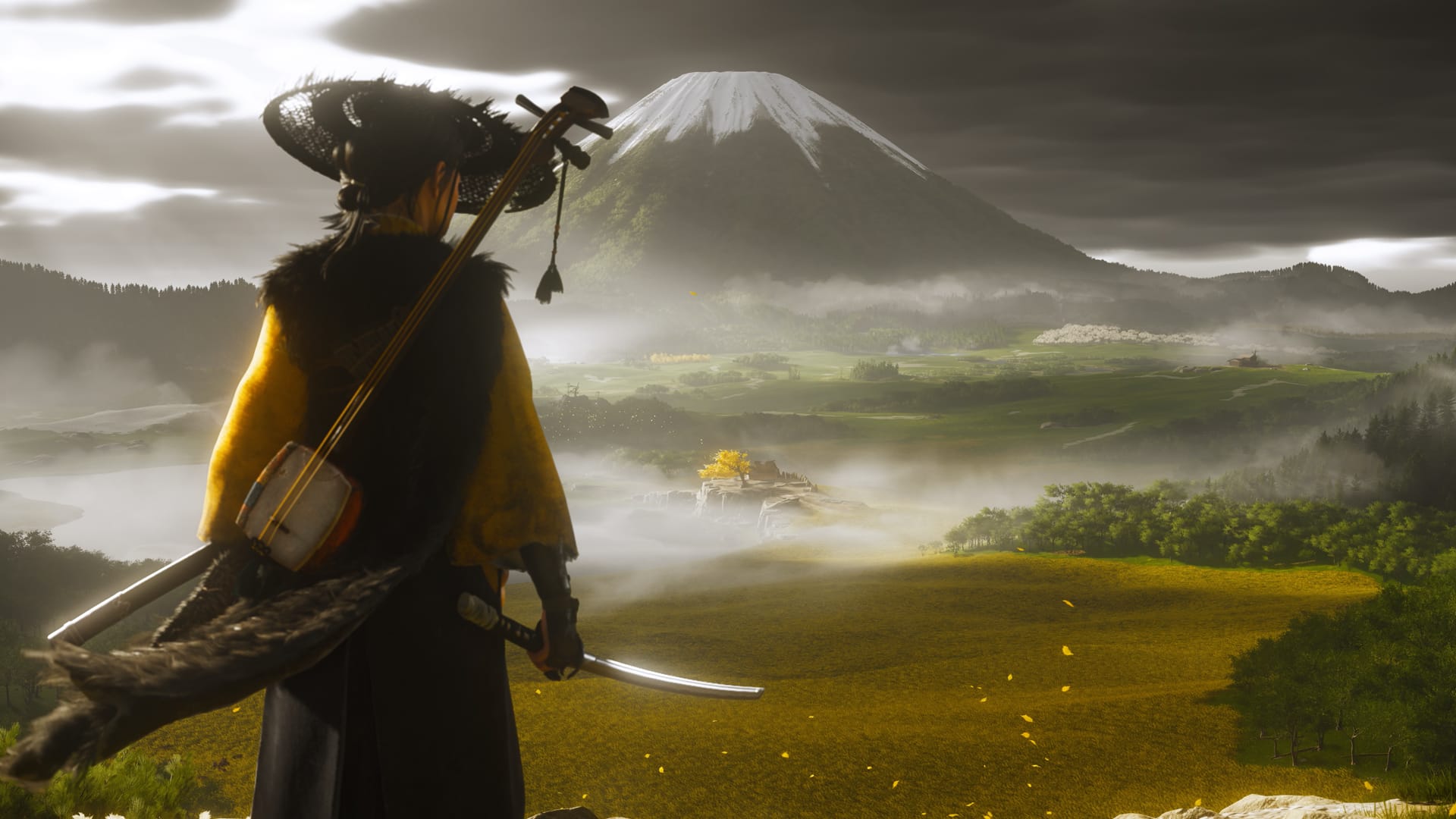
At the time of writing, it is mere days until Sucker Punch releases Ghost of Yōtei on October 2nd. The game arrives five years after Tsushima, which makes it clear how much AAA development has changed over the years. These games take a lot of time to make when it comes to outputting a quality product nowadays. It can be heartbreaking for developers when a game takes that long and isn’t received well, so I always wish every game the best when it inevitably releases. Yes, there are stigmas around AAA development, but we have to remember the real people behind these games. The developers work under the umbrella of those corporate people at the top of the chain. We need to remember the human, regardless of the game's eventual results.
Nonetheless, I am looking forward to Ghost of Yōtei. I only hope Sucker Punch builds on the foundation laid by Tsushima. My mind worries about the sequel somewhat, hearkening back to my experience with Insomniac’s Spider-Man 2, a great game by all means! However, it was a very 'safe' sequel that improved gameplay but fell behind in the story department, inevitably ending up on equal footing with its predecessor. I’m hoping Sucker Punch doesn’t play it too safe when it comes to Yotei's structure. I’m not telling them to reinvent the wheel, but I’m hoping they identify the flaws with Ghost of Tsushima and correct them, instead of repeating the same game with minor refinements. Yōtei is set over 300 years after its predecessor, so that’s already a promising departure. From what I've gathered of the plot so far, it is apparently more of a revenge arc than a character shift so that’ll be interesting as well.
I love the setting choice for Ghost of Yōtei, taking place around the Yōtei mountain range in what is modern-day Hokkaido, Japan. Unlike the island of Tsushima, Hokkaido is a setting that isn't unfamiliar to gaming. The Pokémon series visits Hokkaido in Pokémon Platinum as well as Legends: Arceus. It'll be lovely to see another developer's take on Hokkaido, albeit set much farther in the past, when it was still named 'Ezo'. I believe it's also worth noting for the sake of Yōtei's setting that Hokkaido was not part of Japan at the time. Hokkaido wasn't annexed until 1869 during the Meiji Restoration.
I’ll end here by giving my best wishes to Sucker Punch for their new release this October. I’d happily recommend Ghost of Tsushima to anyone who thinks they’ll resonate with the gameplay or historical setting. It is indeed a game with obvious flaws, but it’ll be a game many will enjoy nonetheless, I feel. There are themes to take away here, such as the anti-war messaging if you really read into it, alongside Jin’s fascinating personal arc. I personally loved Ghost of Tsushima, even with its faults, and I cannot wait to see what Sucker Punch has in store for us next.
